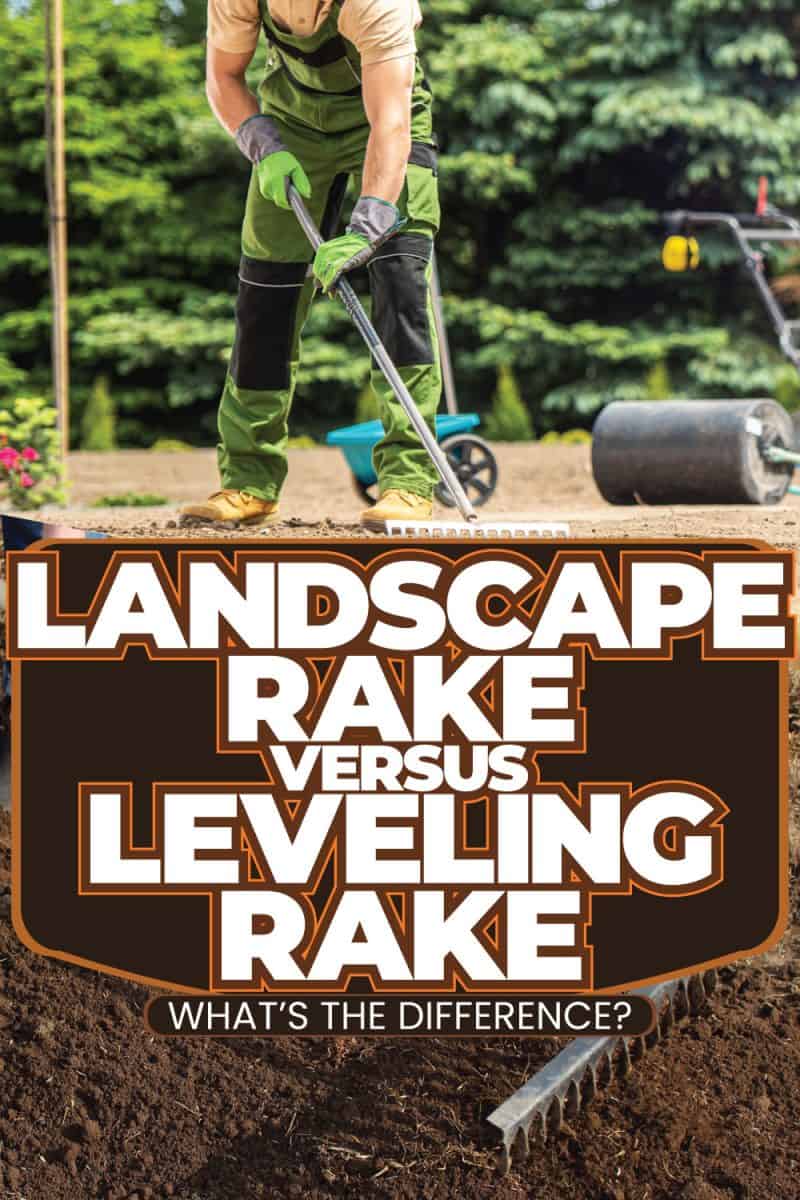If you're new to gardening, you may have heard a thing or two about landscape and leveling rakes. But what exactly are they? And do you need them in the garden? Which one will suit your gardening needs? We did the research and discovered the answers to these questions! In this post, we'll dig deep into the topic and get to know the two rakes.
A landscape rake is commonly used for heavy-duty work such as mixing cement, raking medium-sized rocks, and leveling soil. It's most widely used by landscaping companies rather than in the garden.
A leveling rake can be used to level soil and uneven surfaces and to fill out holes and cavities in a garden.
A landscape rake and a leveling rake have some similarities, but they differ in appearance and overall purpose. Read on to learn more about the differences between these two rakes and the pros and cons of each.
What Is A Landscape Rake?
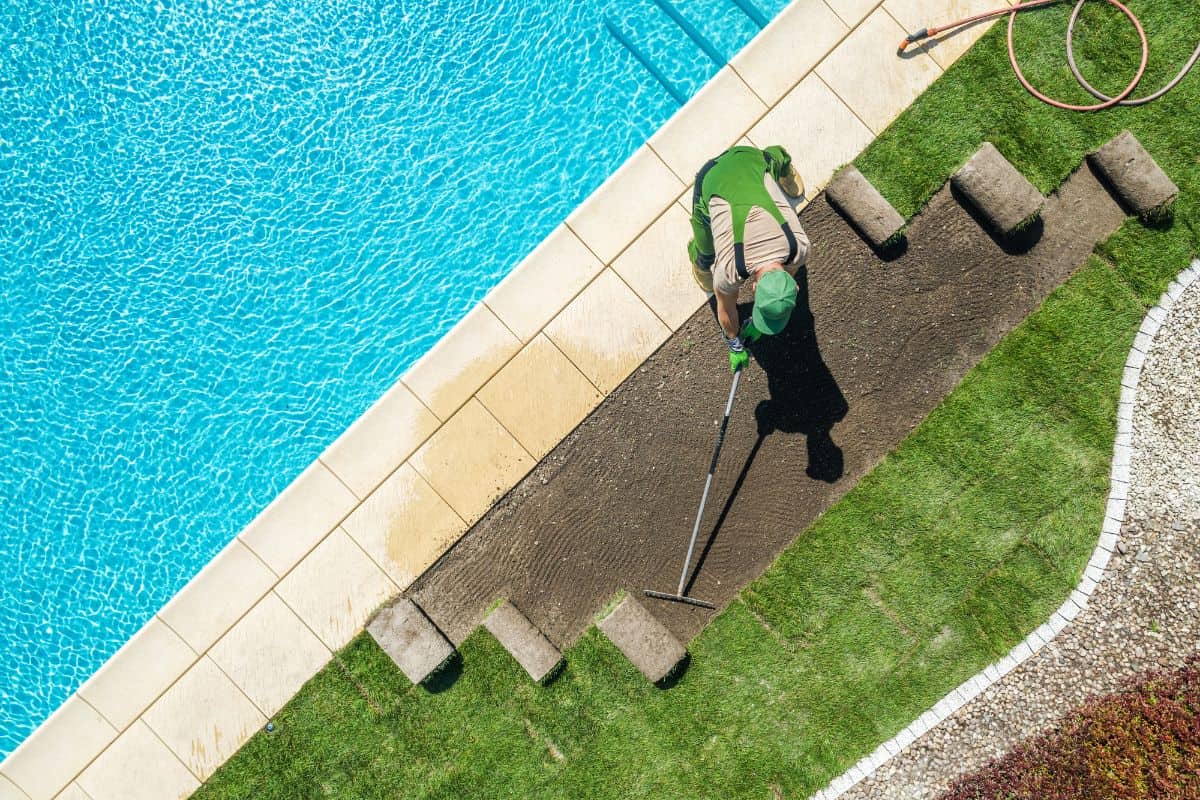
A landscape rake is made of durable material to be useful in heavy-duty work. Because of its size, it can easily move material such as soil, gravel, mulch, and rocks.
When you rake material using a landscape rake, it will eventually smooth the material out.
You might find a landscape rake useful if you have a lawn filled with small pebbles. The pebbles can look messy and scattered, but with the help of a landscape rake, you can easily smooth the rocks out.
A typical landscape rake has a 30-to-38-inch head and tines set wide apart from each other. The head is connected to the handle at a 90-degree angle which makes it easy to use. The handle can be made of aluminum, wood, or fiberglass.
A mechanical landscape rake can be attached to a tractor. This attachment can be handy if you have a big yard or plot of land that needs to be evened out or prepped for garden beds.
A landscape rake isn't a delicate tool, so using it to rake leaves and remove thatch isn't advisable. However, you can use a handheld landscape rake if you're planning to create a garden bed in your yard.
Simply drag the rake like a comb through the soil. It's one of the best ways to prep soil.
What Is A Leveling Rake?
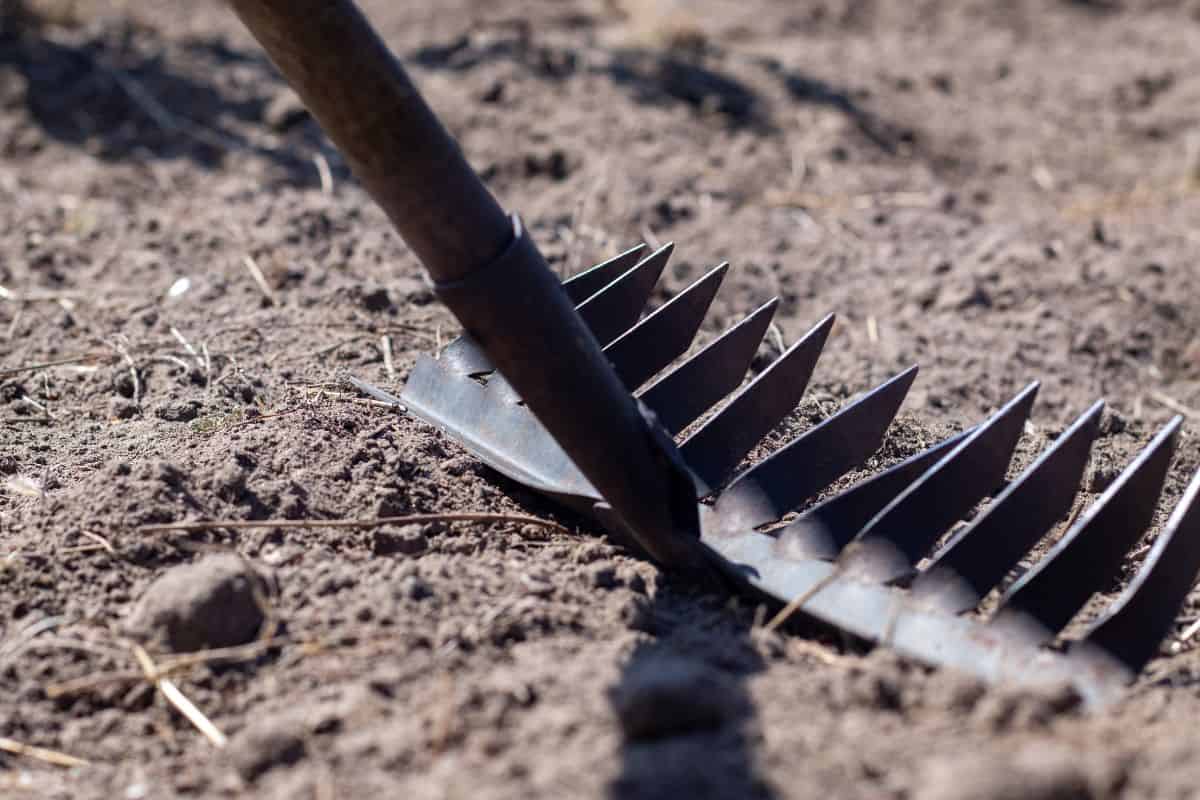
Some gardeners mistake the leveling rake for the landscape rake. This is because both of the rakes can be used to smooth surfaces. But in terms of physical appearance, the two are very different.
The main purpose of a leveling rake is to level out uneven surfaces in a garden. The rake's flat head makes it ideal for evening out surfaces, filling in gaps and holes, and generally making your garden look neat.
If you're interested in keeping your lawn looking pristine and even, this rake is for you. Maintaining your lawn not only makes it look neat but also has other benefits.
The rake can also distribute water and nutrients from fertilizers, even out patches, and help with waterlogging.
A leveling rake is usually made of rust-resistant material such as stainless steel and aluminum. Despite the quality of materials, a leveling rake is lightweight, which is a plus for ergonomics if you're planning on using it often.
Check out this leveling rake on Amazon.
Comparing The Two Rakes

In this section, we'll share information that can help you decide which rake to get. There are a couple of points to consider before deciding to pick one.
Identifying Your Needs
The first thing to do is to identify what you need in a rake. Do you want to keep your garden free of debris, rocks, and dead leaves? Or do you need a specialized tool for keeping your lawn neat and even?
If it's the former, you might want to consider getting a landscape rake. Landscape rakes are great for all-around yard work. You can rake dead leaves, prep garden beds, and mix and even out cement.
But if you're looking to maintain your lawn, you should go with a leveling rake.
How Much Do The Rakes Cost?
If you have a budget for both rakes, great! But if you're trying to minimize spending on gardening equipment, you should know the price ranges for each rake.
The cost of a leveling rake depends on the material. With the most durable leveling rakes, the price can start at around $75 and go up to $200. On the other hand, a quality landscape rake can cost $60 or more.
Check out this landscape rake on Amazon.
Which Rake Is Worth Your Money?
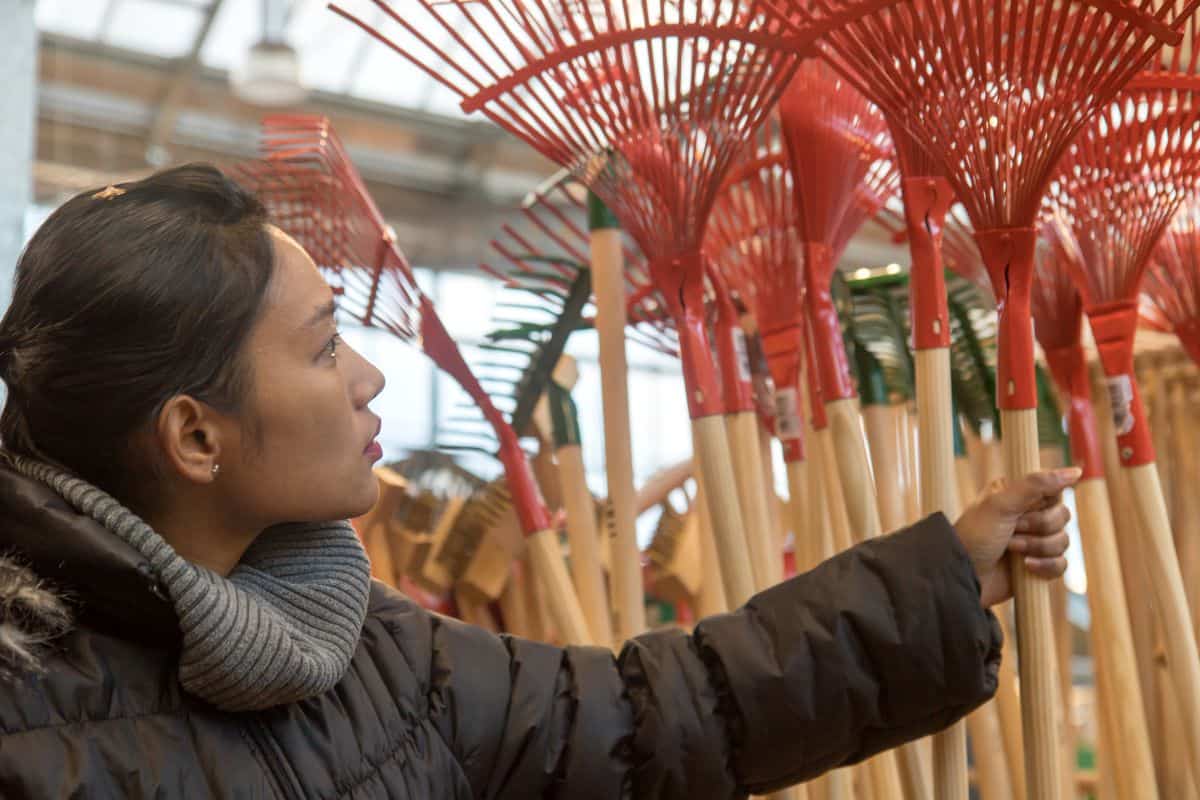
Here's an honest and unfiltered answer: both rakes are fine, and you can get either of them as long as it does the job. But considering the value you get with a landscape rake, it's a much better option.
Here's why: a landscape rake is a versatile piece of equipment. As mentioned in this post, you can use it for almost anything related to cleaning, leveling, or mixing.
Its tines can rake through material, and the rake can also level out and tamp down surfaces. If you're looking for something that functions well all around, you should get a landscape rake.
Users on a popular gardening forum say that landscape rakes are better than leveling rakes. One user also mentions that the price point for a leveling rake is not ideal.
However, users on another forum beg to differ. In response to a question about using a leveling rake to put new sod down on a very large area, a commenter said that a leveling rake is the best tool for the job.
How To Use A Landscape Rake
If you're planning to plant your own turf, using a landscape rake will make things easier. The tines work to prep the soil, the flat head levels out the soil, and you can also use it to tamp down the soil.
The first thing that you need to do is to rake the material using the tines. The tines are spaced apart and are fairly blunt.
With the use of a push-and-pull motion, you'll be able to drag the tines through the soil, breaking up the clumps and spreading the material out. Once you're done raking, you'll be left with uneven soil.
The second step is to even out the soil. Holding the handle with a firm grip, place the flat side of the rake on the soil so that when you drag it, it will even out the soil. Draw the rake through the soil to smooth it.
The third and last step should be tamping down the material. Now, this is an optional step, and it depends on the material that you're dealing with.
Simply hold the rake straight up so that the head sits flat on the material, then push it down a couple of times to tamp it.
Read this post, "How To Use A Landscape Rake To Level A Lawn," to learn more.
How To Use A Leveling Rake
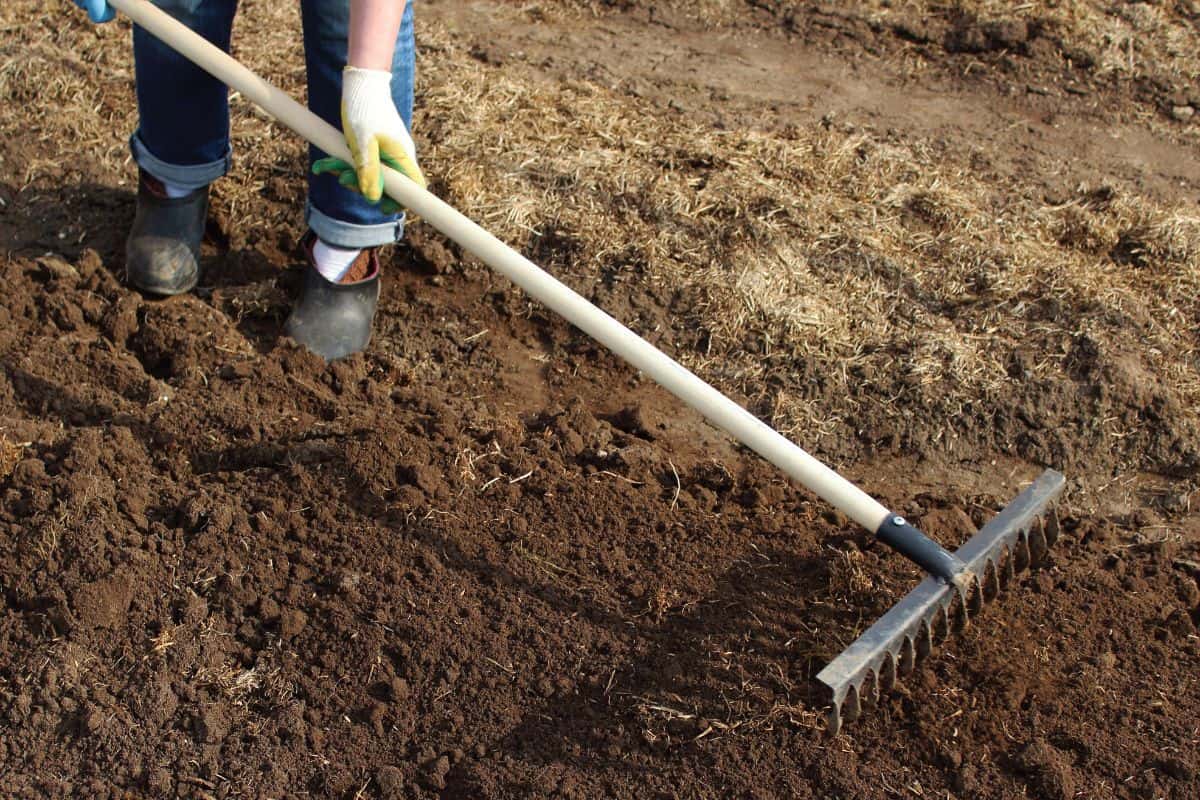
Trying to make your lawn level can be a complex job that takes a lot of effort.
First, you'll need to dig the soil and fill in any holes or cavities. Any bumps that are present also need to be leveled out and made as smooth as possible.
The second step is leveling. With a tight grip on the rake, push the soil until you reach the level you want. Repeat this step until the whole lawn is leveled out evenly. Finally, water down the soil.
In Conclusion
When it comes to choosing between a landscape rake and a leveling rake, you should consider what you need from the tool and how each one can help you accomplish your yard and gardening tasks.
If you're planning to level out a large area of uneven ground, a leveling rake is a reliable tool and the better choice.
However, if you're looking for a versatile tool that can serve several functions, a landscape rake is what you need.
